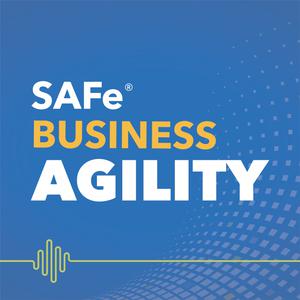
SAFe Business Agility Podcast
Scaled Agile
SAFe Business Agility Podcast
- 1 minute 20 secondsThink, But Don't Worry
Many things can go wrong—and right—in an Agile transformation. In today’s episode, Enterprise Agile Coach and SPCT Ray Angelone shares his succinct wisdom about how to handle those existing and potential challenges.
Like what you hear? Connect with Ray on LinkedIn. Explore SAFe courses here.
28 January 2025, 3:40 pm - 29 minutes 31 secondsEmpowering the Next Generation of Agile Coaches
“I was really nervous and scared starting my first [Agile Release] Train. It would have been awesome if I had a mentor or coach initially to help me with that. You have to have mentors in your life. Those areas that I struggled with as I was growing my career, I reflected on ‘how can I make it better for others?’ and that’s what I strived to do.” In this mentor-focused episode, Adam talks to Sarah Blaesing, an SPCT at TEKsystems who found her passion in tech and determination while balancing her roles as a working mom and military spouse.
The conversation covers topics including finding career success by building connections and being willing to take risks; developing and empowering others, especially women, in tech and Agile careers; and how she created a unique academy program that provides newly certified Agile coaches and practitioners with hands-on experience and mentorship.
Like what you hear? Connect with Sarah on LinkedIn to learn more about the SAFe Academy at TEKsystems and check out their Agile Transformation Services. Explore SAFe courses here.
22 January 2025, 4:00 pm - 2 minutes 4 secondsTactical Tuesday: Take a Step Back
In this episode, Lindy Quick, SPCT and transformation architect, explains why taking a step back from your day-to-day activities and remembering to breathe can provide important perspectives and help spark new ideas.
Like what you hear? Connect with Lindy on LinkedIn. Explore SAFe courses here.
21 January 2025, 11:16 pm - 2 minutes 42 secondsTactical Tuesday: Back to Basics
Whether you’re working with a customer who is just starting an Agile journey or further along in the process, it’s important to meet them where they are. In this episode, Ramesh Nori, SPCT, consultant, and transformation architect shares his advice for getting back to basics in your research, approach, and actions, to help that customer succeed.
Like what you hear? Connect with Ramesh on LinkedIn. Explore SAFe courses here.
14 January 2025, 5:37 pm - 40 minutes 4 secondsThe Government Difference
“Technology is evolving quickly … and the government is embracing that. And so as they look at modernization and transformation initiatives, how can we look at AI and machine learning and different ways to incorporate these technologies into improving their solutions, improving their services to their constituents, and then integrating that into this whole mindset of agility.” How does a small but mighty Agile consulting firm help government clients tackle the unique challenges and opportunities of large-scale enterprise transformation? Adam finds out in this episode with Beth Hatter, Director of Agile Training, and Jason Fair, CEO of Genesis Consulting Partners. The discussion covers topics including the influx of new, tech-savvy talent seeking to improve government services for citizens, how agencies are adopting a different approach to deliver and manage their products, and the opportunities ahead for both the government and Genesis Consulting. Like what you hear? Connect with Beth and Jason on LinkedIn. Explore SAFe courses here.
18 December 2024, 5:00 pm - 3 minutes 12 secondsTactical Tuesday: Engaging Leadership
As an organization starts its transformation, it’s critical that leadership is actively involved. In this episode, Michael Robertson, Enterprise Coach at Engaged Agility, and SPCT candidate, shares his tips to engage leaders. He also explains why things aren’t always what they seem when leaders appear to be uninterested. Like what you hear? Connect with Michael on LinkedIn. Explore SAFe courses here.
17 December 2024, 4:00 pm - 2 minutes 58 secondsTactical Tuesday: Using All of the Tools in Your Toolbox
Organizations know that it’s important to use various tools and approaches to build better systems faster. In this episode, Robin Yemen, Space Domain Lead at Carnegie Mellon University elaborates on that topic and offers a different perspective on specializing. Like what you hear? Connect with Robin on LinkedIn. Explore SAFe courses here.
10 December 2024, 5:00 pm - 36 minutes 56 secondsA Service-oriented Future
In this episode, Adam talks to Mike Idengren, Principal Owner of LSA Digital, about the future of IT services. The two discuss topics including the need to move away from the concept of digital transformation and instead embrace continuous evolution, why it’s important to build modular digital architectures that enable rapid experimentation, the challenges of modernizing legacy systems and how to do it, and the critical role of collaboration and communication in designing effective digital solutions. Mike also shares his perspective on why AI is not a magic solution but how it can be helpful. Like what you hear? Connect with Mike on LinkedIn. Explore SAFe courses here.
4 December 2024, 5:00 pm - 2 minutes 24 secondsTactical Tuesday: Agile Release Trams
That’s not a typo in the episode title, it’s a thing. So, what exactly is an Agile Release Tram and how can it provide value to your organization? Em Campbell-Pretty, CEO of Pretty Agile, and SPCT and SAFe Fellow, explains. Like what you hear? Connect with Em on LinkedIn. Explore SAFe courses here.
3 December 2024, 3:00 pm - 41 minutes 26 secondsArchitecting the Future You Want
“Architecture should be leading the delivery, not just the parts … And when I say delivery, I don’t mean the tech delivery. I mean the overall business product delivery.” This episode explores the evolution of digital transformation and the role of architecture in enabling product-centric thinking and Agile delivery. Adam talks to Ravi Purushothaman, Director, Head of Enterprise Agility, and Logan Daigle, Director of Business Transformation, both with NTT Data. The three dive into topics including the importance of architects leading the delivery process, the challenges of transforming legacy “brownfield” environments versus building new “greenfield” solutions, and the need for a holistic, product-oriented approach. Ravi and Logan also share how they think leaders can best support product-centric thinking in any organization undergoing a digital transformation. Like what you hear? Connect with Ravi and Logan on LinkedIn. Explore SAFe courses here.
20 November 2024, 4:00 pm - 3 minutes 50 secondsTactical Tuesday: Enhance Your Coaching Skills With AI
Whether you’re a Release Train Engineer (RTE), a member of the Lean-Agile Center of Excellence (LACE), a Scrum Master, or another type of coach, artificial intelligence (AI) can enhance your skills. Roni Dolev Tamani, Lead Lean-Agile Coach with AgileSparks and SPCT candidate, explains how. Like what you hear? Connect with Roni on LinkedIn. Explore SAFe courses here.
19 November 2024, 3:00 pm - More Episodes? Get the App
Your feedback is valuable to us. Should you encounter any bugs, glitches, lack of functionality or other problems, please email us on [email protected] or join Moon.FM Telegram Group where you can talk directly to the dev team who are happy to answer any queries.
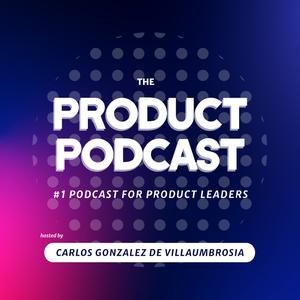 The Product Podcast
The Product Podcast
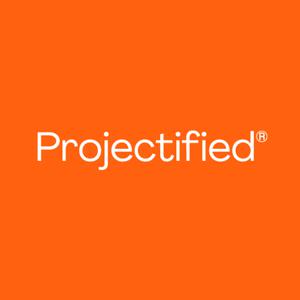 Projectified
Projectified
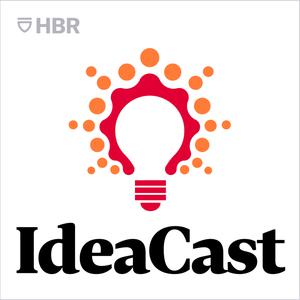 HBR IdeaCast
HBR IdeaCast
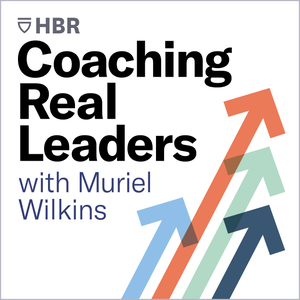 Coaching Real Leaders
Coaching Real Leaders
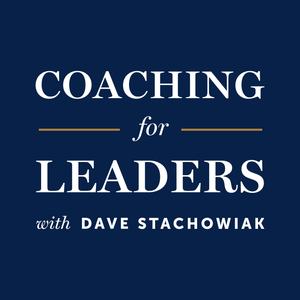 Coaching for Leaders
Coaching for Leaders
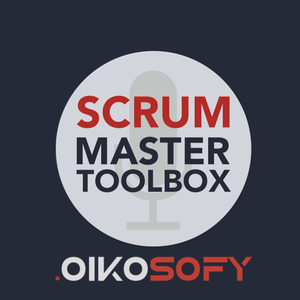 Scrum Master Toolbox Podcast: Agile storytelling from the trenches
Scrum Master Toolbox Podcast: Agile storytelling from the trenches